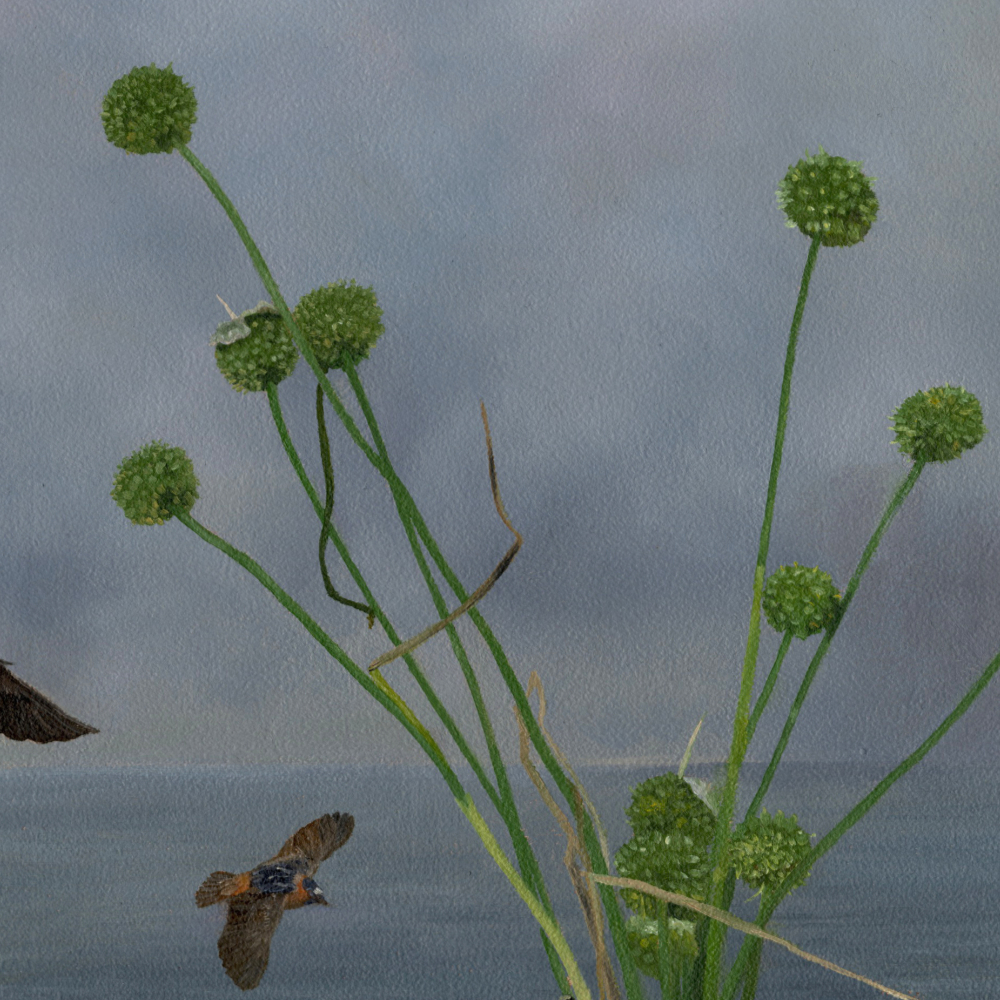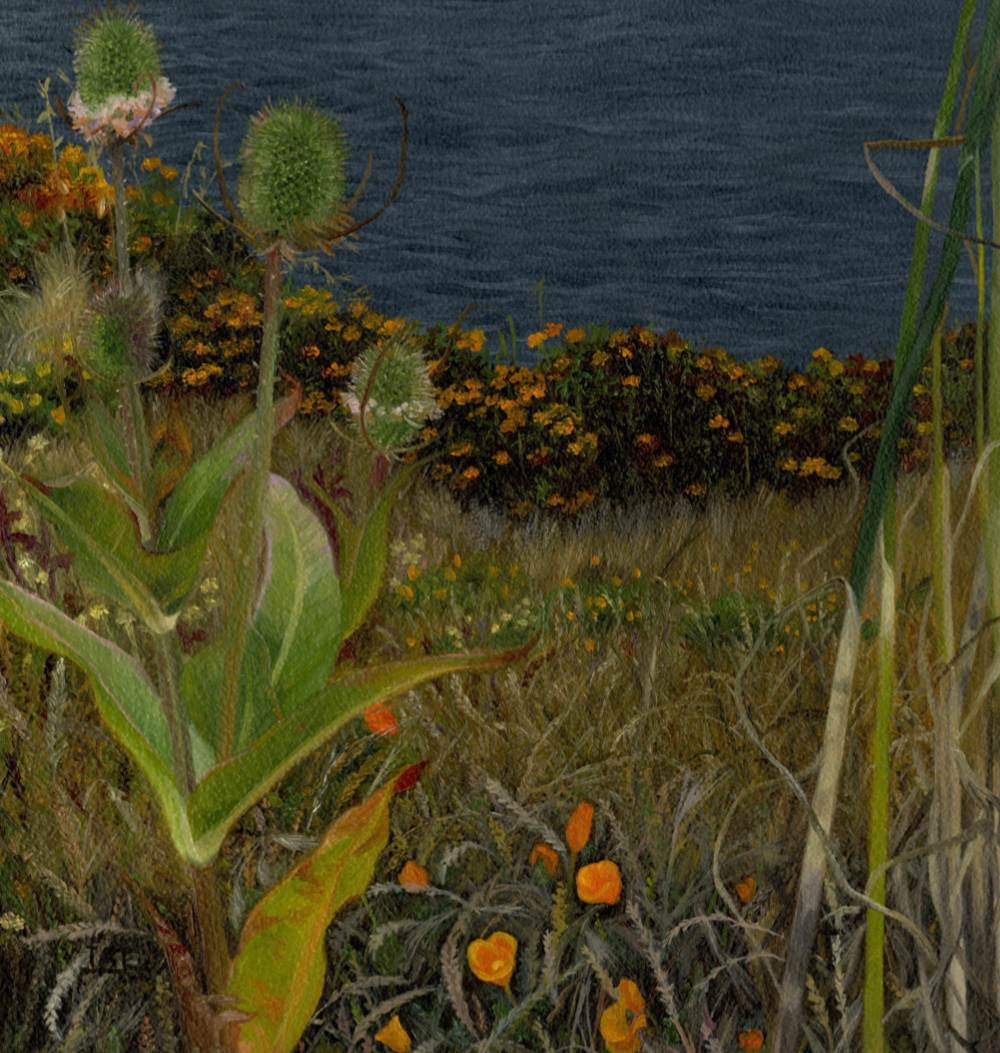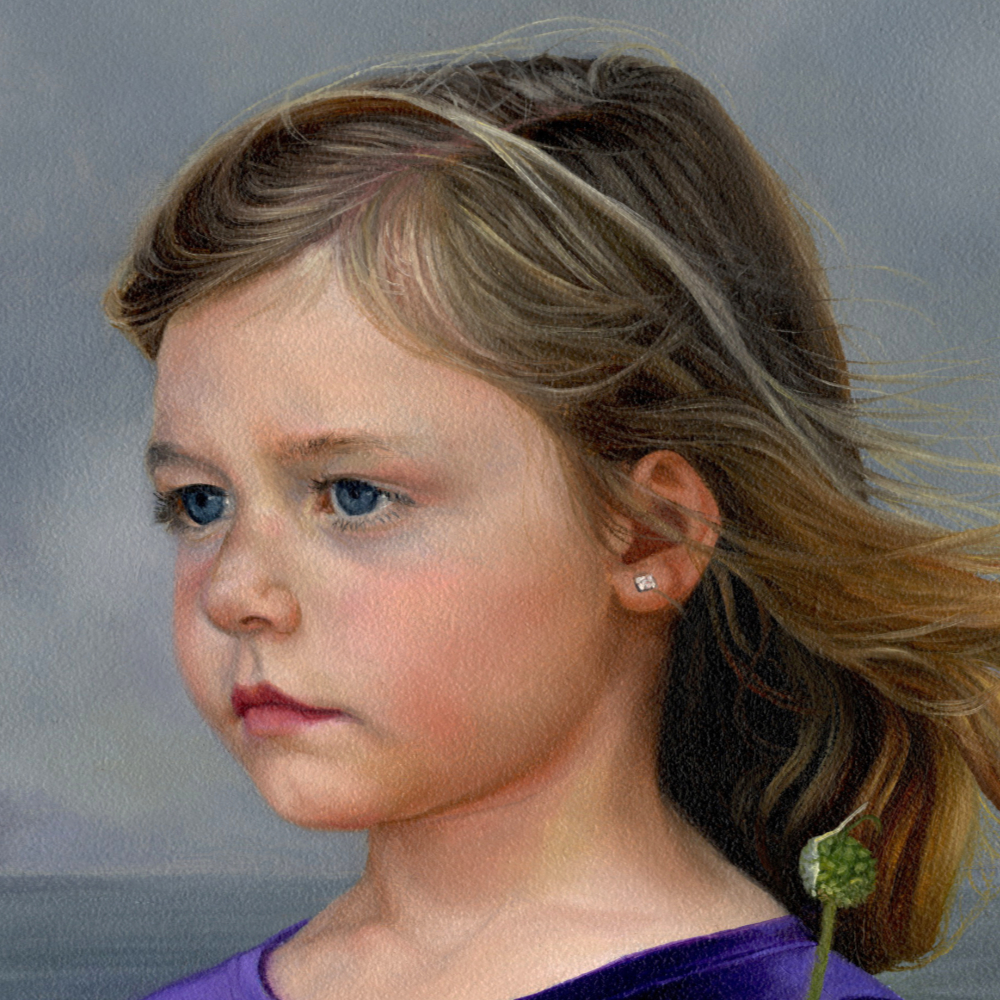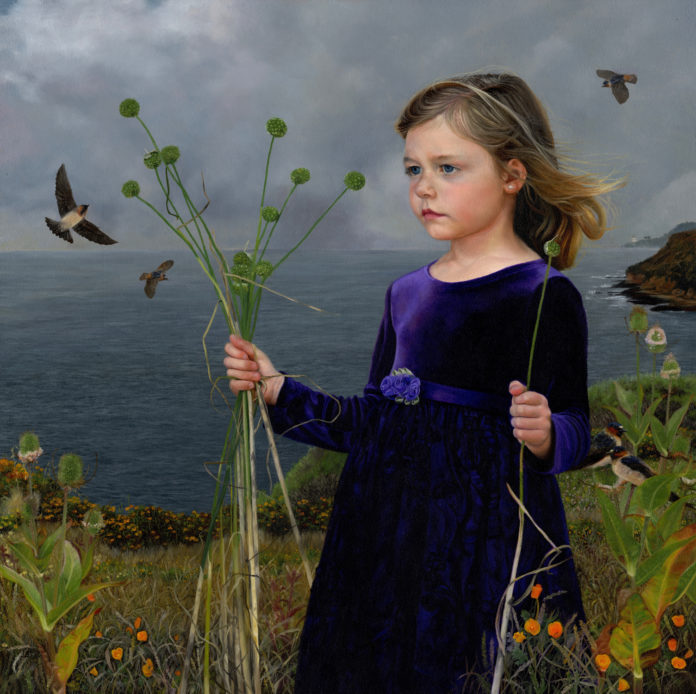Contemporary Realism > Narrative artist Lesley Thiel takes us through the symbolism and painting process of her realist work “Swallows and Amazon.”
Creating “Swallows and Amazon”
BY LESLEY THIEL
My paintings focus on humanity and its relationship with the earth. I want to speak about the empowerment of young girls and women as they become future leaders. My work gives me the opportunity to portray them in natural settings, and I take joy in painting all the details of their surroundings.
The inspiration for this painting came from a book I read as a child, called Swallows and Amazons, by Arthur Ransome. Although it involved the adventures of a group of children enjoying their holidays in pre-war England, it always seemed like “the childhood” to aspire to. The symbolism of swallows played an important role in the choice, since they are a symbol of love, hope, and peace. The birds in this painting are California cliff swallows, whose colors echo the hues of the coast.
Contemporary Realism – a Process
Painting Process
My process for painting “Swallows and Amazons” started with photographs of six-year-old Lanie and her flowers. I dressed her courtesy of Goodwill, in a purple velvet and taffeta dress that looked like it was made for her. The green flowers in her hand were pulled from my front yard when I was weeding on the morning of the photoshoot. They’re a type of invasive garlic, and I liked their alien appearance. I thought they looked a little like a mace that a medieval knight might carry into battle. I asked Lanie to imagine that she was a queen, standing on a cliff and looking out to sea. She found that pose perfectly and gave me her serious face. I had a fan trained on her, so that her blond hair was blowing behind her.

On the Painting Composition
The composition of my paintings begins with a quickly sketched idea. I then create a photo composite using Affinity Photo, an application similar to Photoshop. I knew the background I wanted to use was the coast of central California, in that magical period when the hills are filled with flowers. I had taken numerous photos when I visited, in July, and picked plants and seascape from various photos. I included the lighthouse, near Elephant Seal Point, as a symbol of hope. I’m not a virtuoso with photo composites, so I also do a detailed drawing of my final composition covered in the names of the files I want to use in a particular section of the painting, as well as notes about how a reference needs to be changed at the time of painting.
I work with oils on birch panel sealed on all sides with GAC100, followed by six layers of gesso to the painting side. This gives me a relatively smooth surface that allows for the fine detail I want to capture. I grid up a precise and detailed line drawing onto my panel and block in an underpainting using unthinned oils.
Once my underpainting was fully dry, I began to paint the sky, with its brooding, grey clouds. I rarely use black to mix my grey tones, but prefer to blend ultramarine blue and burnt sienna, then lighten with titanium white. I premix many of my shades and tube them, so that I have tonal consistency across a painting. I have tubes of flesh shades, blues, and greens. If I am painting a dress of a very specific color, I will mix and tube that paint too.
Painting the Background
The sea in the background was painted using darker hues from the clouds. The flying swallows were rendered in the same hues as the cliffs and ocean, with the underbelly of the far left bird mostly using a blend of titanium white and yellow ochre.
Next came the labor of love involved in painting the plants and flowers of the California coast. Most of the flowers and leaves were painted in variations of yellow ochre, with a dash of titanium white, cadmium red, or a green earth. I allowed myself glorious blends of cadmium yellow and red to paint the vibrant California poppies.
Painting the Foreground
Once my background plants were dry, I painted the poppies and thistles of the foreground, oiling in with walnut oil. The thistles, which are also an invasive species, have pretty pink and lilac flowers. I used the same hues as the cold and warm tones of Lanie’s face to paint these, while rendering the leaves in mixtures of green earth, yellow ochre, cadmium yellow, titanium white, and burnt sienna.

Contemporary Realism: Painting the Portrait
Finally I reached the point of painting Lanie and her lovely face. This piece is 20 x 20 inches, which means that all the elements in it are relatively small. Lanie’s face is 3.5 inches, but still took several days to paint. Her face and the rest of her hands were all finished in closely related flesh tones that I had premixed to represent the light, mid, and dark areas of her skin. I use these premixed colors across all of my figurative pieces. I painted her irises with the same mixture I used to render the ocean.

The oils used for the dress were ultramarine violet and ultramarine blue. The dress essentially involved glazing the detailed grisaille I had created in the underpainting, adding highlights on the velvet of the top, by admixing a little titanium white.
The next part of this process was patience. I had to wait until those ultramarine hues dried, so that I could paint the poppies and grass in front of Lanie. I really wanted that contrast of orange and purple to pop.
ABOUT THE ARTIST
Lesley Thiel is a self-taught figurative artist known for her highly detailed photorealistic paintings. Working in oils, her pieces focus on narrative portraiture and magical realism. She dresses her models — usually children — in imitations of the ruffs and collars of bygone ages, or headdresses of dead flowers and branches. Her paintings contain imagery designed to tell a story of the fate of our species and our relationship to the earth. They include feathers, flowers, and animals as a sign of hope for our collective future. They speak of the strength of the upcoming generation of young women and girls, who may well be our saviors. They question the accepted narrative of the female voice in society and the myths attached to this. Her paintings have been included in numerous exhibitions, and are represented in collections throughout the world.
Related Article on Contemporary Realism and Art > How “The Deconstructionist” is a Response to “Deconstructivism”





